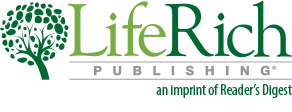Module 2: Planning
Creating a Writing Project Plan, Part One
Keith Ogorek, senior vice president of marketing for Author Solutions and a published author, shares his tips on how to finish writing your book. He walks you through creating a writing project plan, with steps that include identifying your writing goals, identifying your readers and identifying your book's genre and subgenre.
Video Transcript
Hi, I'm Keith Ogorek. I'm really glad you're going to spend some time watching the webinar, "Creating a Writing Project Plan." In part one of this webinar, we're going to look at identifying your goals, we're going to help you understand why it's important for you to identify your audience, and we're going to make sure that you understand the nuances and understand your genre. So let's get started.
Many people aspire to write a book, but few actually achieve the goal. Why is that? Well, in some cases, they don't know where to start, or in other cases, they get started, but they never finish. In this webinar, I want to help you create a project plan for writing your book that will get you to your goal of becoming a published author. There are three things that are important for you to consider. Number one: Identifying your goals. Number two: Identifying your audience. And number three: knowing your genre. So let's take them one at a time.
The first step in creating an effective project plan is identifying your goals. The key question you want to ask yourself is who do you want to read the book? That's important because it will help you have a picture in mind as you're writing the book of who ultimately might be your customer. Secondly, what is your motivation for writing your book? If your answer is: "I just want to make a lot of money," you'll find that you won't be successful. What you need to do is understand, clearly, what impact you want to have in people's lives as a result of your writing. And the third question, how will you publish your book? In our webinar, "Six Tips on How to Get Published, Part 2," we address this question in much detail. We explored the four different paths to publishing that exist for authors today, and I would encourage you if you haven't watched that webinar, to go back and watch it. I think it'll answer all the questions you have with respect to which is the best path for you to publish.
Now the second key part of creating an effective plan is identifying your audience. Think about it this way, who is the person that you picture is most likely to read your book? For example, if you're writing a romance book, chances are it's not going to be an 80-year-old male who's going to read your book. If you're writing a children's book, you actually could appeal to an 80-year-old male who might have grandkids, but it really needs to be effective as a book for young people. Narrow your audience by thinking about what makes your book unique. In other words, why would they want to pick up that book and read your book? Avoid what I call the "everyone mistake." Too often, I ask authors who is the audience for your book, and they give me an answer like: "Every man, woman and child on this planet." Now while that's an ambitious goal, it's unrealistic, and it really doesn't help you focus your writing or focus your marketing once your book is complete.
Once you've identified your goals and identified your audience, the third step is to know your genre. Your book genre is part of your book's identity, both to your readers and to the bookstores that are going to be selling it. So consider the basic guidelines for a few popular genres.
From mainstream fiction, you want to make sure that your story is accessible to people across all ages groups and gender lines. Manuscripts for mainstream fiction are usually between 60,000 and 90,000 words. And they must have an appeal for everyone if they're going to be considered mainstream. So one thing to keep in mind though is there is a high level of competition for this area in this genre. So if you're going to write a book, make sure it's the best book it can possibly be.
A second category for you to consider is memoir. These are books that are centered on personal life stories. Memoirs in many cases are written like novels, but they are not fiction. Their length may vary from 60,000 to 100,000 words, but for a first-time author, usually around 75,000 words is ideal. Memoir authorship requires you to say what you have never said – a scary, but in some cases, liberating experience. Depending on what your story is, you may want to consult legal counsel so that you don't put yourself in a situation where you are creating any libel or slander. But if you have a compelling story, that you want to make sure gets preserved for others to learn from and share, a memoir is a great way for you to do that.
A third popular category is romance. This is typically aimed at women and teenage girls. There are two types of romance novels: a series romance, which is meant to have a shelf life of about a month and are short in length, and standalone novels, much more meatier than a series of romance and often have several subplots. They're around 90,000 to 120,000 words. The main plot is about two individuals falling in love and their struggles to build a lasting relationship. It's a story as old as mankind, but one that we never get tired of reading as long as it's an interesting story.
A fourth, and equally important, category is science fiction. Science and technology are central to the story. Sci-fi books can be short, or they can be long. Most commonly though, short stories are under 75,000 words, and long stories range in length from 80,000 to 120,000 words. Bending of scientific laws is allowed, but if bent too much, the story becomes fantasy and not science fiction. There are six popular subgenres in science fictions: post-apocalyptic, military sci-fi, first contact, cyberpunk, time travel and space opera. Understanding the nuances of each of these genres is important as you begin to think about identifying and connecting with an audience.
Another big category is fantasy. This can contains some intricate and involved plots, often including magic or supernatural phenomena that take place in unrealistic places. Most manuscripts have about 100,000 words, but are known to also be a bit shorter or much longer. Extremely long manuscripts can be difficult because, for first-time authors, it takes quite a skill to write a very, very long book that holds the reader's attention. Long manuscripts are usually from people who've written books in a series as they build an audience and reader base. Fantasy also has subgenres like science fiction does: high epic, urban, historical, slipstream, traditional, comic and contemporary. Each of these subgenres actually attracts a particular audience. So once again, it's important for you to understand where your book fits, not only in the mind of the reader, but where a bookstore might stock it.
Another category is thrillers. Thrillers have huge stakes and are rife with apprehension, creepiness and violence. These novels generally run up to 120,000 words in length and are read by men, women and teens. The solution of a thriller is not for the satisfaction of solving a puzzle, but for an energizing release of the high tension created by the story. Subgenres for thrillers include psychological thriller, crime thriller, technical thriller, medical thriller, romantic thriller and legal thriller. Once again, it's key that you understand where your subgenre is when you write your book.
Well, that concludes part one of "Creating a Writing Project Plan." In part two of this webinar, we're going to look at why it's important for you to set up a writing schedule, what you can do to set deadlines for yourself, how to make yourself accountable and make adjustments in your schedule, and perhaps most importantly, how to set up a writing sanctuary so you can write most productively. For information on publishing, feel free to contact a publishing consultant at LifeRich Publishing for a free consultation.


